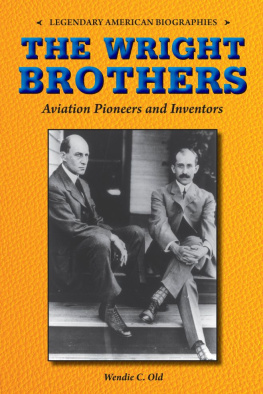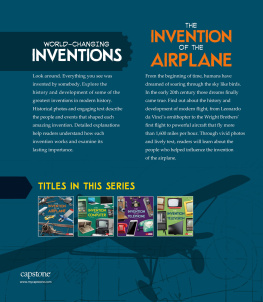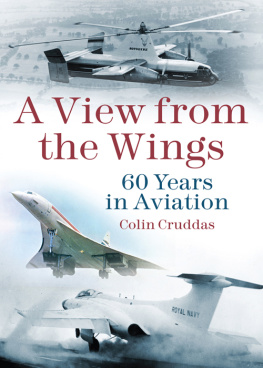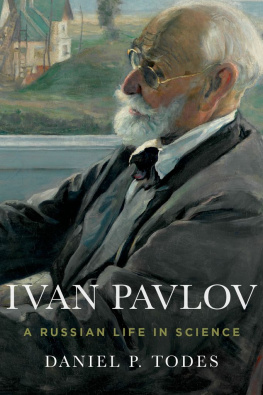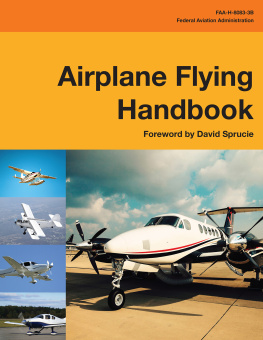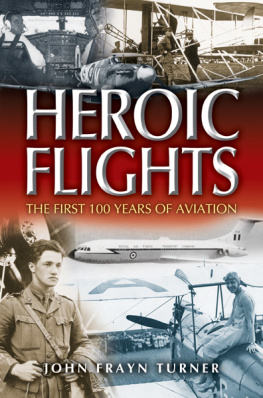Ivan Jurilj - Aviation And Airplane: 110 Years Of Historical Development And Technical Evolution
Here you can read online Ivan Jurilj - Aviation And Airplane: 110 Years Of Historical Development And Technical Evolution full text of the book (entire story) in english for free. Download pdf and epub, get meaning, cover and reviews about this ebook. year: 2016, genre: Non-fiction. Description of the work, (preface) as well as reviews are available. Best literature library LitArk.com created for fans of good reading and offers a wide selection of genres:
Romance novel
Science fiction
Adventure
Detective
Science
History
Home and family
Prose
Art
Politics
Computer
Non-fiction
Religion
Business
Children
Humor
Choose a favorite category and find really read worthwhile books. Enjoy immersion in the world of imagination, feel the emotions of the characters or learn something new for yourself, make an fascinating discovery.

- Book:Aviation And Airplane: 110 Years Of Historical Development And Technical Evolution
- Author:
- Genre:
- Year:2016
- Rating:4 / 5
- Favourites:Add to favourites
- Your mark:
- 80
- 1
- 2
- 3
- 4
- 5
Aviation And Airplane: 110 Years Of Historical Development And Technical Evolution: summary, description and annotation
We offer to read an annotation, description, summary or preface (depends on what the author of the book "Aviation And Airplane: 110 Years Of Historical Development And Technical Evolution" wrote himself). If you haven't found the necessary information about the book — write in the comments, we will try to find it.
Ivan Jurilj: author's other books
Who wrote Aviation And Airplane: 110 Years Of Historical Development And Technical Evolution? Find out the surname, the name of the author of the book and a list of all author's works by series.
Aviation And Airplane: 110 Years Of Historical Development And Technical Evolution — read online for free the complete book (whole text) full work
Below is the text of the book, divided by pages. System saving the place of the last page read, allows you to conveniently read the book "Aviation And Airplane: 110 Years Of Historical Development And Technical Evolution" online for free, without having to search again every time where you left off. Put a bookmark, and you can go to the page where you finished reading at any time.
Font size:
Interval:
Bookmark:
Aviation And Airplane
110 Years Of Historical Development And Technical Evolution
IVAN JURILJ
PROOFREAD BY PROF. MARINA MANUCCI, MSc
originally published in 2014 by despot infinitus ltd, zagreb
find out about the most important episodes in the history of aviation and how airplanes technically evolved through the years from the fragile flying machines before world war i to the mighty rulers of the sky and the ground beneath them
TABLE OF CONTEST
More than 110 years have passed since the first sustained, controlled flight in the aircraft heavier than air and powered by the engine. One of the greatest moments in human history was achieved as a result of relentless work of the Wright brothers and their predecessors. That moment marked the beginning of aviation era and set the basic postulates for future designers of different types of motorized aircraft.
In the time that followed the historical flight of Orville Wright on December 17, 1903, the development of world civil and especially military aviation has reached unprecedented proportions. In the period that, compared to the total time of human existence represents just a blink of an eye, a period of some hundred years, the airplanes have made possible massive transport of passengers, soldiers and goods to faraway destinations. At the same time they have evolved into machines able to reach the edge of space, to fly at speeds that are multiple the speed of sound and to reach the level of technical excellence which renders them superiority above the battlefield.
Airplanes evolved in all their characteristics, following the meaning of words like faster, higher, further, more precise
Since the beginning of 20 th century the airplane has stood at the forefront of human achievements, showing the progressive way and in parallel developing human activities correlated to designing, materials, electronics, production processes, medicine, chemistry, IT and communication technologies and many other disciplines that aviation depends on and could not progress without them.
Of course, behind every new and revolutionary aircraft and aviation achievement stand people ready to invest and risk a whole lot, so that after years of research and development a new aircraft that justifies its existence would emerge. Through the history top scientists, engineers, designers, aerodynamicists and pilots have devoted their lives to push the limits of aviation and to set new challenges for future generations.
The countries which inherited the development of aviation on the highest level, have been in general the most influential and developed countries of the world.
This book attempts to describe the most important episodes and to remind of some of the most important individuals in the history of aviation. At the same time, the book is following the technical development and evolution of airplanes. The book sets in correlation the Worlds military and commercial trends with the evolution of both military and commercial airplanes, trying to reveal to the reader the fantastic world of aviation and airplanes, from the earliest days to the present.
If this book inspires at least one individual to engage with any form of aviation and to become a member of society in which belong aircraft engineers and technicians, designers, military, civil and sport pilots and any other individuals correlated to aviation; this book has achieved one of its goals.
This book is dedicated to my girls, Marina and Amelia
THE WRIGHT BROTHERS STORY
December 17, 1903, Kill Devil Hills North Carolina, only a few curious individuals were present for the historical event. After acceleration, on a specially designed 20 meter long catapult rail, the Flyer aircraft in the hands of pilot Orville Wright, took off in the air. Although it was only a twelve-second flight, at the distance of just 36 meters, that was officially the first sustained, controlled flight in the aircraft heavier than air and powered by engine and one of the most important events in human history.
The flight of one of the Wright brothers was a result of many years of effort of these two excellent designers and visionaries and marks the beginning of a new era in humans conquering the sky. To achieve their goal, Wilbur and Orville Wright, besides their unlimited devotion and efforts, used the findings of their predecessors in the field of aircraft design and aerodynamics.
The older of the two brothers, Wilbur Wright, was born in 1867 in Millville, the American state of Indiana. Four years later Orville was born in the city of Dayton, the state of Ohio.
In 1878, when Orville and Wilbur were 7 and 11 years old, their father gave them a helicopter toy made by an idea of the French aerodynamic pioneer Alphonse Penaud. The toy made from cork, bamboo and paper with a rubber strip for rotating the propeller was no bigger than a human palm and it could fly.


Orville and Wilbur Wright the brothers who opened the era of aviation with the first flight of the Flyer aircraft. (Photo: Wilbur and Orville Wright)

Otto Lilienthal conducting many flight experiments in gliders of his own design and manufacture, he systematically followed and documented behaving of aircraft in the air. (Photo: Dr. Richard Neuhauss)
Many years later the Wright brothers stated that exactly that moment from their childhood triggered their curiosity and interest in flying. Trying to design the same model of the toy, they were not successful enough so they focused on manufacturing the kites.
In 1896 the great German airman and flyer, Otto Lilienthal, died after he crashed in his glider. His pioneering work proved that human flight is very well possible. Otto Lilienthal will be remembered for his first scientifically based studies of the bird flight, especially storks. Using polar curves he managed to describe aerodynamics of their wings, putting in correlation aerodynamic drag and lift. Later, using the obtained results, he started to design the flying machines for flights and experiments.
His motorless kites were controlled by changing the center of gravity of the aircraft by moving the body of the pilot over the triangle control frame; exactly the same like the one we can find today in modern ultra light hang gliders powered or unpowered by the motor. Lilienthal also conducted an array of experiments to improve stability of his aircraft. This included a two-wing design, so that with a smaller wing span he could keep the same wing surface. He also installed trailing edges of tail horizontal stabilizers over hinges to be able to move them up and down, and in such a way influence the controllability of the aircraft around its lateral axis.
In the period of his research activities on his own gliders he conducted over 2,500 flights, starting in 1891, with his first glider called Derwitzer and until his death after crashing in his aircraft on August 9, 1896. His last words were: Sacrifices must be made.
The French aeronautical researcher Octave Chanute gathered the results of Otto Lilienthal research work and started designing his own gliders, based on the design concepts of the famous German. The experiments conducted by the Chanute in 1896 and 1897, on the sandy dunes of the Lake Michigan, made him sure that the best way to generate sufficient lift over wing surfaces of the aircraft is to put more wings one above each other. To achieve adequate stiffness of the wing constitution, wings had to be connected using vertical rigid links and then those links had to be diagonally connected with wire. So the overall constitution of the wings, links and wires would get the form of braced girder; very well known to Chanute from his former business bridge construction.
Font size:
Interval:
Bookmark:
Similar books «Aviation And Airplane: 110 Years Of Historical Development And Technical Evolution»
Look at similar books to Aviation And Airplane: 110 Years Of Historical Development And Technical Evolution. We have selected literature similar in name and meaning in the hope of providing readers with more options to find new, interesting, not yet read works.
Discussion, reviews of the book Aviation And Airplane: 110 Years Of Historical Development And Technical Evolution and just readers' own opinions. Leave your comments, write what you think about the work, its meaning or the main characters. Specify what exactly you liked and what you didn't like, and why you think so.

